Average customer experience? You’ve met a baseline expectation. Poor customer experience? Expect to be blasted on social media.
The most powerful customer experience — and the one that boosts your business the most — is one that delights the customer. According to Customer Camp, positive surprises “will trigger an intense flood of positive emotions that behavior economists refer to as ‘delight.’”
Most businesses aim for customer satisfaction. Your customers receive an expected interaction. You answer their question or solve their problem. When you delight the customer, it’s different: the customer was expecting a routine interaction and instead left the experience with a smile on their face.
But what does delight look like IRL? We’ve rounded up some of our favorite customer delight examples to spark ideas for your own customer service team.
1. Surprise your customers with unexpected gifts
For some customer service teams, a birthday gift is an obvious choice to delight customers. In reality, customers probably expect this. It’s certainly not a surprise on a day when their email inboxes are flooded with coupon codes or other freebies from businesses.
Less expected options would be anniversary gifts or a gift welcoming a new baby. Not only do these gestures build customer relationships, but they also show your customers you’re paying attention to the significant milestones in their lives.
For example, 5K Media has new clients fill out a welcome survey during onboarding. The survey collects details the company can use to provide a personal touch later. You can store those details in a CRM to identify opportunities to delight the customer.
You could also add little bonuses to customer orders. E-commerce brand Innisfree gives away free mini samples (which customers have come to expect) and has also delighted customers with seasonal gifts. During Christmas, they sent a scrunchie set with any $65 purchase.
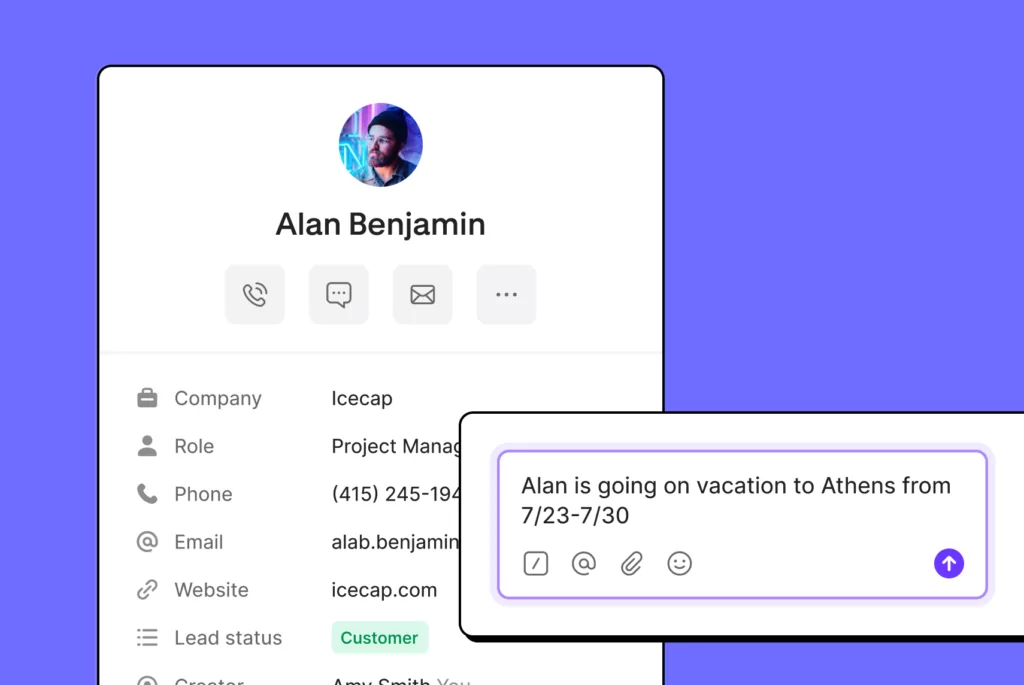
Pro tip: OpenPhone customers can use custom property fields to keep track of customer details – visible to your whole team.
2. Anticipate customer needs
Customers don’t want blanket product or upsell recommendations. There are a lot of tools available that can help you analyze past purchasing behavior and browsing history. The key is what you do with that information — and how you can turn it into a delight for the customer rather than an obvious marketing tactic to get the customer to spend more.
For example, Apple sends an email offering a complimentary online personal session to new customers. This complementary service adds value, even if it’s not an upsell.
According to an Apple customer, he received an email from Apple about 20 minutes after his MacBook was delivered.
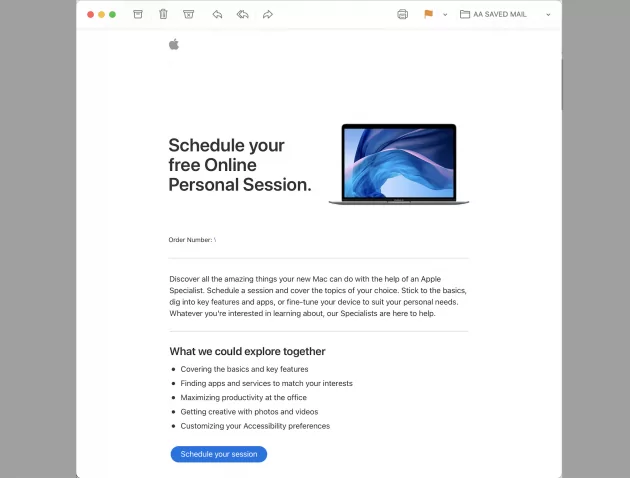
The best part? You can easily use automation for these customer interactions. You can send an email based on delivery information or a customer’s online subscription and include a link to schedule a meeting with someone on your customer success team.
Even if customers don’t take advantage of your offer, they may still be delighted that you’re invested in their satisfaction with your product.
Customers can get really excited when brands interact with them online. You may not know that you have “superfans:” people who love your product and brand.
You can follow hashtags or mentions and respond to customers on social media. One TikToker posted a video after she ordered a cake from Walmart’s bakery and personalized it in a popular coquette style. Walmart — a brand with hundreds of millions of shoppers — took the time to reply.
@karolinaurdialez22 Got the cake at walmart for $18 and then i just added bows,pearls and glitter! ✨🎀🎂🫶🏻 #walmartcakedecorator #walmartfinds #coquette #coquetteaesthetic ##sagitarius #decemberbaby #bows #coquettebow #cakediy #birthdaycakes ♬ original sound – Karolina Urdialez

You don’t have to be as big as Walmart to have an outsized impact on your customers’ social media. If the customer wasn’t expecting a response, it will be a delightful surprise and show that you’re paying attention.
In other cases, customers may have tagged your brand, hoping for a response that will boost their own visibility on the social platform. If that’s the case, authentically interacting with the customer will still delight them.
4. Implement customer feedback
Customers can often feel like their feedback is ignored. They fill out surveys, ask for new features… and nothing changes.
Implementing customer feedback is critical for any business. Making customers aware you’ve implemented their feedback ensures they feel heard. Reach back out to customers who have made requests once you’ve made the change. It will delight them to know their feedback was incorporated, especially if it’s a product or service they use a lot.
Some SaaS companies even have public-facing product roadmaps. Loom has a roadmap that shows features “Coming Soon,” divided into different categories.
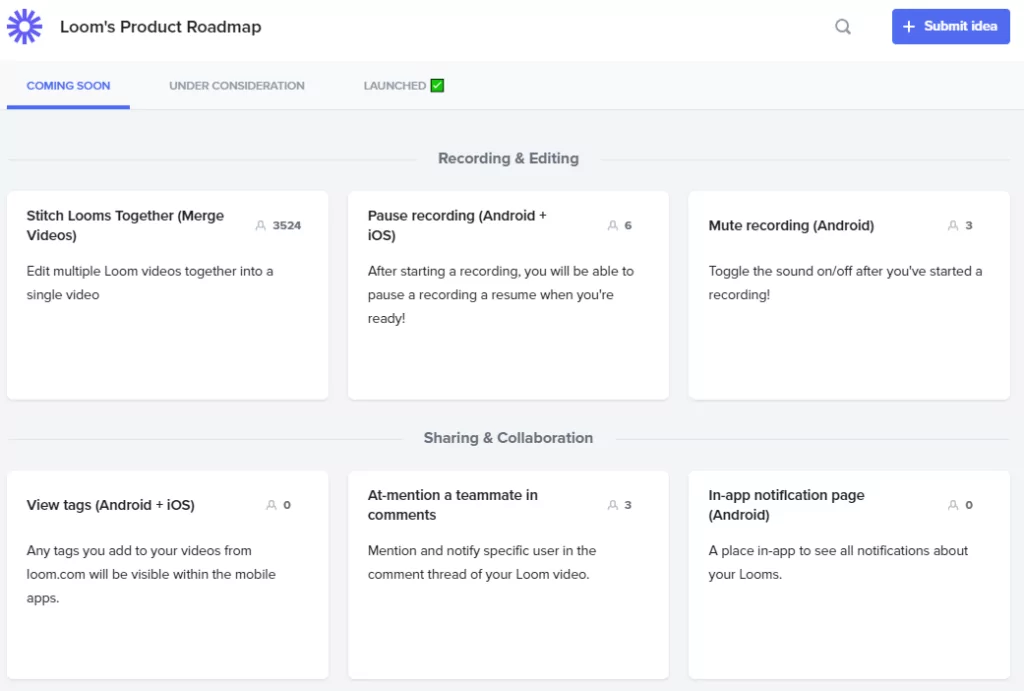
Public-facing roadmaps can delight customers because they can see the progress of their requests (that it’s being “worked on” as an example). It also shows customers that your company holds itself accountable to its promises.
5. Be persistent with complex issues
You can only exceed a customer’s expectations when you go above and beyond. In Salesforce’s State of the Connected Customer Report, 73% of customers expect you to understand their unique needs. To exceed expectations, you need to offer personalized assistance — and then some.
This often comes into play during challenging customer support issues. A customer service rep who’s empathetic and goes the extra mile to solve the problem makes the customer’s life easier. “If we take a second to make sure we fully understand the situation, gather all the information we need, and clarify anything as necessary — before addressing the issue — it ultimately creates a better experience,” says Drew Schuffenhauer, Customer Support Manager at OpenPhone.
Take this example from an OpenPhone customer. The customer service rep solved multiple issues while maintaining a positive attitude. The interaction delighted the customer so much that it prompted a glowing review.
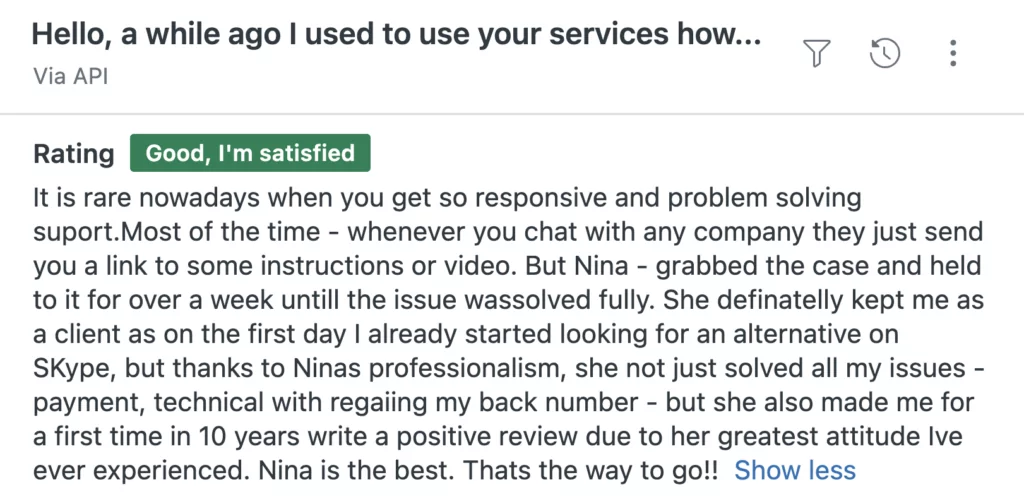
Customer reviews are gold because they’re proof that your team is great at helping customers or that you have a fantastic product.
Read more about how we scaled our support team to serve 58k customers at OpenPhone.
6. Foster emotional connections
Customer Camp described the “intense flood of emotions” that can lead to customer delight. Sometimes, this can happen on a large scale and create a positive impression of your brand.
Take Dove’s Real Beauty campaign. Launched in 2004, the campaign challenges stereotypes about beauty while promoting more inclusive and diverse images in its ads. The Real Beauty Pledge promises to feature real women instead of models and help girls build body confidence and self-esteem. Powerful ads have sparked far-reaching conversations about beauty in the media.
While many businesses don’t have Dove’s ad budget, you can find small ways to create emotional connections with your customers. A handwritten note, for example, is a thoughtful touch.
Chewy is known for sending handwritten notes for everything from pet birthdays to holidays. Chewy employs many card writers and “strives for authenticity when it comes to showing our appreciation to the Chewy family.”
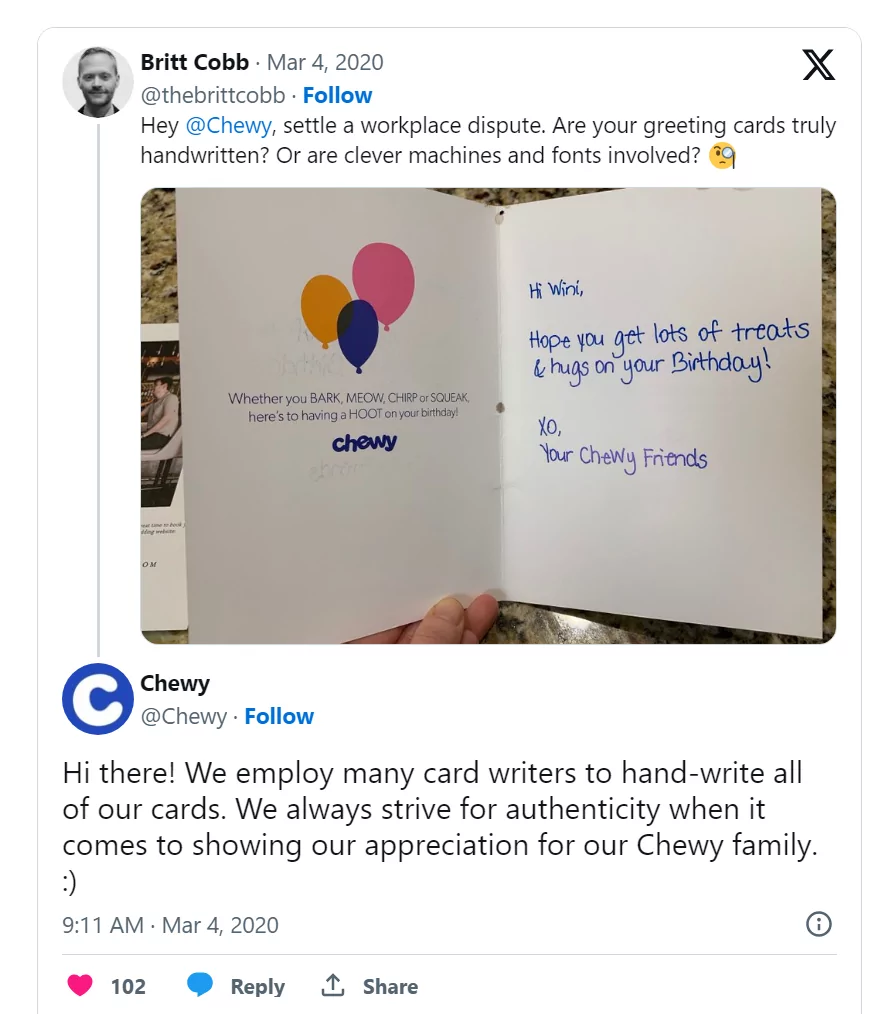
7. Create space for community
Sometimes, you can delight your customers by fostering interactions with other customers.
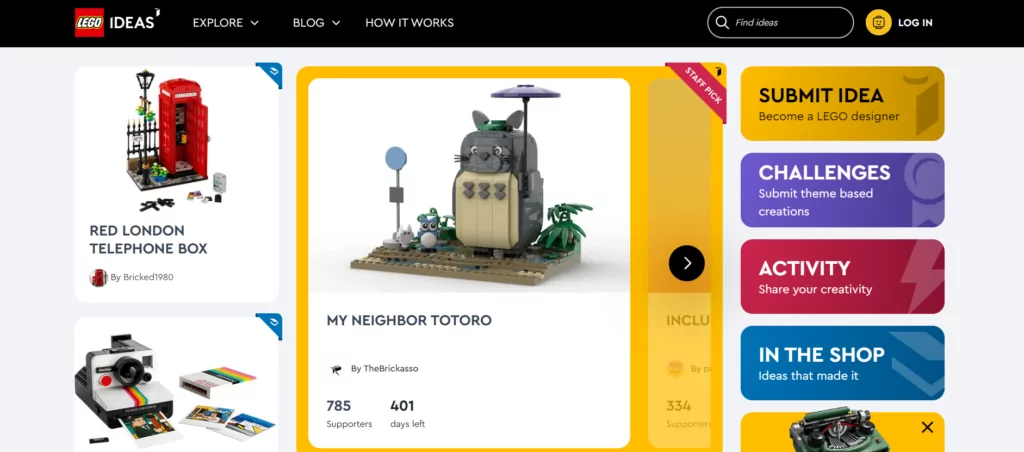
Take LEGO, for example. The online LEGO Ideas community allows fans to submit and vote on new products. It’s a place for LEGO enthusiasts to gather and collaborate. They can build connections with each other, which, in turn, creates more brand advocates.
You can create community spaces using platforms like Slack or Discord. Buffer has a Discord community for its users, describing the group as a place “to connect about topics related to building a business, growing a brand, and lots more.”
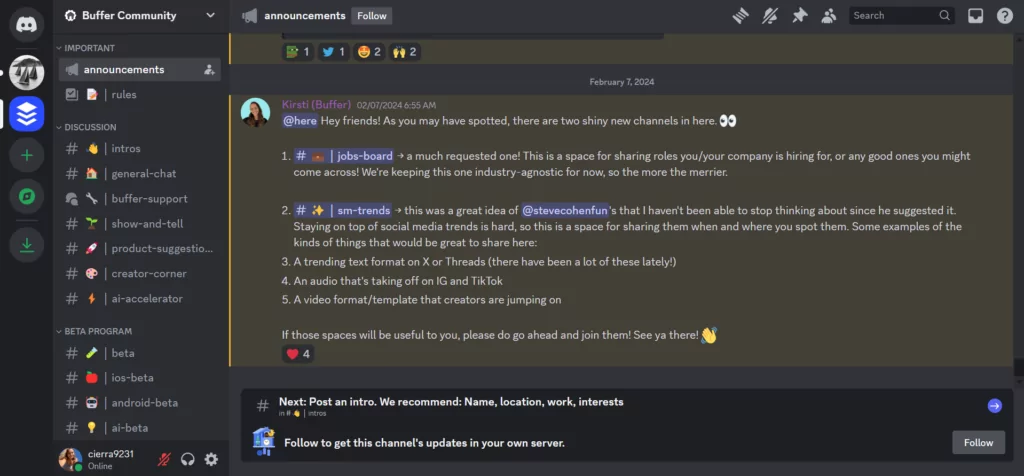
While the Buffer community has channels like customer support and product suggestions, several channels have broad appeal for users looking to engage with each other. Additionally, Buffer added a job board and social media trends channel at the request of its users. These channels provide more opportunities for users to return to the community.
8. Empower frontline employees
You can do a lot of planning to delight your customers, but additional opportunities will come up during interactions with your customer service team. When those happen, you can empower your frontline staff to take action without waiting for permission.
If you give employees some parameters or a budget they can use at their discretion, they’ll seize those moments to delight the customer.
Dutch Bros. Coffee, known for its friendly and outgoing staff, writes personalized messages on cups and engages in genuine conversations with its customers during their visit. Those interactions create an on-brand experience in the store that customers can expect. But beyond that, baristas are known for gestures like random free drinks, a surprise that coffee lovers certainly appreciate.
dutch bros always just giving me my drinks for free… I’m not complaining but like yall just don’t want my coin?
— mia (@rredruum) February 8, 2024
Check out our guide to small business customer service for a framework to deliver great service.
How can you measure customer delight?
The American Marketing Association found in a study that delighting customers improves customer loyalty. The study cites that these can be measured through word-of-mouth and repurchase intentions.
But “word of mouth” and “repurchase intentions” may feel intangible. If you’re a small business, you may need more concrete metrics (through surveys) to measure your efforts to delight your customers.
Net promoter score
A net promoter score (NPS) is based on a single survey question: “How likely are you to recommend the company/product/service to others?” Customers’ responses are an easy way to guage customer loyalty.
- Customers who respond with a 9 or 10 are “promoters” or customers most likely to recommend your brand.
- Customers who respond with a 7 or 8 are “passives,” or customers who like your brand, but wouldn’t necessarily recommend it.
- Customers who respond with a 6 or lower are “detractors,” or customers who are least likely to recommend your brand.
To calculate NPS, you’ll take the percentage of promoters minus the percentage of detractors. If 100 people respond to your survey, and you have 50 promoters (50%) and 10 detractors (10%), your Net Promoter Score is 40.
It’s important to remember that you’re subtracting the percentage of detractors from promoters, not the raw number. If you have more detractors than promoters, you can have a negative NPS.
Customer satisfaction score
You can measure customer satisfaction by asking customers about your product, service, or experience. You would provide responses ranging from “Very Unsatisfied” to “Very Satisfied,” usually on a 1-5 scale.
To calculate your customer satisfaction score (CSAT), you’ll add the positive responses, divide by the total number of responses, and multiply by 100 to get a percentage. If you have 75 positive responses out of 120 total responses, your CSAT is 62.5%. The higher the number, the higher the level of satisfied customers within your customer base.
Customer effort score
A customer effort score (CES) measures the amount of effort it takes for customers to get their issues resolved or questions answered. Typically, this is measured on a scale of “Very Easy” to “Very Difficult.” CES should be measured across all touchpoints in the customer journey.
CES is measured as an average of all responses to a CES survey. While CSAT measures satisfaction, CES measures ease of interactions, including channels like a chatbot or self-service option.
It’s difficult to delight your customers if your CES is low. If a customer struggles to connect with a rep or the rep doesn’t understand the issue, the customer may still leave the conversation frustrated — even if the rep attempts to delight the customer.
Good to great: Drive more business by focusing on delight
Businesses should focus on creating positive customer experiences if they want to drive a “stickiness” factor. Customers will remember those moments the next time they make a purchase or interact with your customer service team.
If done well, happy customers will be so delighted that they’ll spread the word about your brand. And word-of-mouth is one of the most powerful marketing strategies you can hope for.
If you found this article helpful, share it with your team! We love to see more companies develop initiatives to delight their customers.
You can also dive deeper into this topic with our guide to delivering true customer delight.
